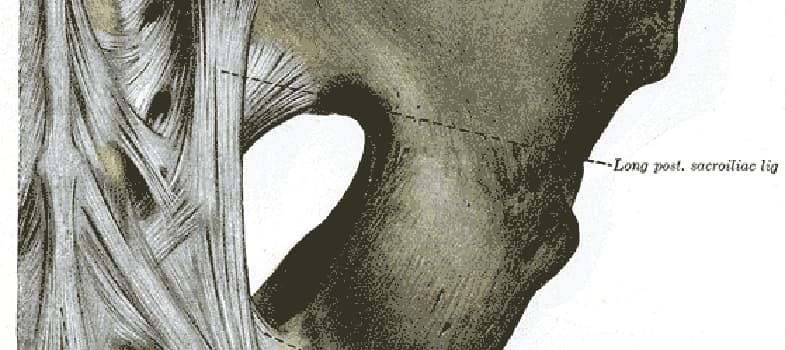What Are Sacroiliac Joint Steroid Injections?
Sacroiliac joint steroid injections are utilized to reduce back pain that is the result of an inflamed or injured sacroiliac joint. Clinical reports have consistently indicated that about 15-30% of adults suffer from chronic, nonspecific pain in the lower back that developed due to sacroiliac joint problems. Research has also shown that the administration of steroid injections is very effective for this type of pain. Injections into the surrounding tissue of the joint (an extra-articular injection) or directly into the joint (a peri-articular injection), provides patients with pain relief that far exceeds the degree of relief that individuals who are given placebo injections experience. Moreover, most patients have reported that the effects generally last for as long as one month and repeated injections tend to increase the length of the pain relief.
How Are Sacroiliac Joint Steroid Injections Performed?
In order to provide a better understanding of the injection procedure as well as the region the medication is administered to, the structure of the sacroiliac joint will be briefly described. The sacroiliac joint is positioned at the base of the spinal cord and this large structure connects the hips to the spine. It provides weight-bearing support for the limbs and the upper body, but it also enhances stability and reduces the occurrence of injuries by limiting the lower body’s (e.g., the torso) range of movement.
In addition, the sacroiliac joint connects a structure called the sacrum (bottom of the spine) to the pelvic bone (ileum), therefore it is also known as a diarthrodial joint. The area where the sacrum and ileum meet is protected by thin layers of cartilage. There is a small space between the structures that contains thick, clear synovial fluid that cushions each joint, and the entire structure is encased inside of a fibrous capsule. The capsule is protected by a tough membrane, and it is this area directly outside of the membrane that the medication is injected into.
Before the procedure begins, a local anesthetic is applied to the skin and an imaging device such as an X-ray or fluoroscope is used to guide the insertion of a very thin needle through the back and into the targeted region. Contrast dye is injected before the medication to ensure that the needle is in the right place and that the medication will be equally distributed throughout the affected area. Once the correct placement has been confirmed, steroids are administered along with an anesthetic. The anesthetic numbs the affected tissue and reduces pain, while the steroids reduce inflammation. However, in order to protect healthy tissue from being exposed to the potent steroids, only the regions that have been shown through imaging (e.g., X-ray) to have severe inflammation are injected with the medication.
A sacroiliac joint steroid injection is a brief, non-surgical procedure that is easy to perform. Due to the non-invasive injection method that is applied, the injection can be administered in an outpatient setting with only the need for local anesthesia. If a patient experiences a high level of anxiety before the procedure, a mild sedative may be given to the patient, but this usually is not necessary. Patients are encouraged to talk to their doctor about their apprehensions regarding the injection.
Most patients who receive a sacroiliac joint steroid injection report an almost immediate reduction in their pain and dramatic relief several days later. Side effects include minor bleeding from the needle injection site, an infection, or nerve injury, but such complications are not very common. The injection can also be safely repeated several times over a one-year time frame in order to improve the level of pain relief.

Conditions Related To Sacroiliac Joint Steroid Injections
Sacroiliac joint steroid injections are typically performed by an anesthesiologist to treat persistent back pain that has developed due to injured, inflamed, or irritated nerves in the sacroiliac joint, especially if the patient cannot specifically pinpoint the pain. Moreover, sacroiliac joint pain is often hard to diagnose and in most cases is caused by straining the lower back, or by a traumatic injury. Research has even shown that approximately 40-50% of adults who are diagnosed with sacroiliac joint pain can specifically describe a previous event that more than likely caused the pain to initially develop. The most common events that lead to this type of pain include repetitive stress (e.g., heavy lifting), falling down, and motor vehicle accidents.
However, traumatic events do not always account for every sacroiliac joint pain diagnosis. Furthermore, clinical studies have revealed several characteristics that appear to increase the risk of suffering from pain in the sacroiliac joint. The characteristics include: scoliosis, persistent strain, biomedical and gait abnormalities, and anatomical changes. Pregnancy can also be a factor in sacroiliac joint pain due to the increase in the amount of weight the body has to bear.
The most commonly reported complaint from individuals who are having problems with their sacroiliac joint is intense, chronic pain in the lower back that is non-specific. This is one of the first indications to a physician that sacroiliac joint damage may be present. The next process involves evaluating the patient’s muscle strength, balance, flexibility, and possible sensory impairments in order to recommend an appropriate treatment plan. A physician will usually recommend that a patient try a series of conventional treatment methods (e.g., pain relievers, physical therapy) before suggesting the administration of sacroiliac joint steroid injections.
Conclusion
Sacroiliac joint steroid injections are a commonly utilized treatment approach for individuals suffering from debilitating back pain that is being caused by damaged or irritated nerves in the sacroiliac joint. In the majority of the cases, the joint damage is the result of a traumatic event such as a bad fall or a car accident. This form of treatment is non-invasive and can quickly be performed in an outpatient clinic. Furthermore, most patients report almost instantaneous relief following the procedure and some even report complete pain relief a few days after. Although information regarding the mechanism of action for sacroiliac joint steroid injections is still unclear, research indicates that the injections effectively reduce pain by targeting inflammation.
References
- Chou R, Atlas SJ, Stanos SP, Rosenquist RW. Nonsurgical interventional therapies for low back pain: A review of the evidence for an American Pain Society Clinical Practice Guideline. Spine. 2009;34(10):1078-1093.
- Cohen SP, Chen Y, Neufeld NJ. Sacroiliac joint pain: A comprehensive review of epidemiology, diagnosis and treatment. Expert Rev Neurother. 2013;13(1):99-116.
- Hansen H, Manchikanti L, Simopoulos TT, Christo PJ, Gupta S, Smith HS, Hameed H, Cohen SP. Pain Physician. 2012;15(3):E247-78.
- Jee H, Lee JH, Park KD, Ahn J, Park Y. Ultrasound-guided versus fluoroscopy-guided sacroiliac joint intra-articular injections in the non-inflammatory sacroiliac joint dysfunction: A prospective, randomized, and single blinded study. Arch Phys Med Rehabil. 2013;9:[Epub ahead of print].
- Manchikanti L, Hansen H, Pampati V, Falco FJ. Utilization and growth patterns of sacroiliac joint injections from 2000 to 2011 in the medicare population. Pain Physician. 2013;16(4):E379-90.
- Simopoulos TT, Manchikanti L, Singh V, Gupta S, Hameed H, Diwan S, Cohen SP. A systematic evaluation of prevalence and diagnostic accuracy of sacroiliac joint interventions. Pain Physician. 2012;15(3):E305-44.
- Spiker WR, Lawrence BD, Raich AL, Skelly AC, Brodke DS. Surgical versus injection treatment for injection-confirmed chronic sacroiliac joint pain. Evid Based Spine Care J. 2012;3(4):41-53.


